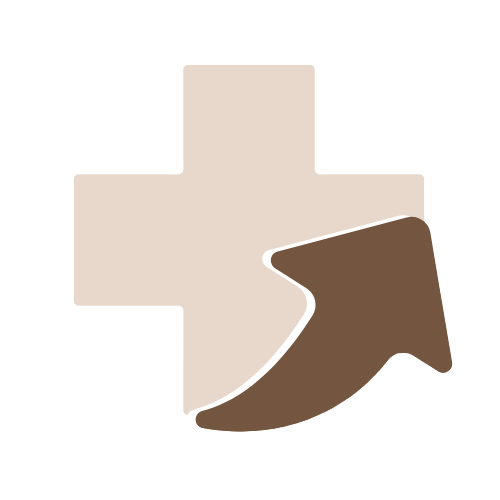Pityriasis Rosea
Overview
Pityriasis rosea is a common, self-limiting skin condition that primarily affects children and young adults. It is characterized by the sudden appearance of a distinctive, scaly, oval-shaped rash that usually begins with a single larger patch known as the "herald patch," followed by a more widespread rash on the body. The condition is generally harmless and resolves on its own within a few weeks to a few months. Although it may cause discomfort due to itching, pityriasis rosea is not contagious and typically does not leave permanent scars. Understanding the course of the disease can help ease concerns and guide proper management.
Causes
The exact cause of pityriasis rosea is unknown, but it is widely believed to be triggered by a viral infection. Research suggests the following potential causes:
- Viral Infections: The condition is suspected to be associated with human herpesvirus types 6 and 7 (HHV-6 and HHV-7), the same viruses responsible for roseola in infants. However, the exact role of these viruses is not fully confirmed.
- Seasonal Trends: Pityriasis rosea often occurs in the spring and fall, suggesting a possible link to seasonal viral outbreaks.
- Non-Contagious Nature: Despite the suspected viral cause, pityriasis rosea is not considered contagious, meaning it does not spread through direct contact or airborne transmission.
- Medications: In rare cases, certain drugs (such as some blood pressure medications and nonsteroidal anti-inflammatory drugs) can cause a rash resembling pityriasis rosea, known as drug-induced pityriasis rosea-like eruptions.
Symptoms
Pityriasis rosea typically progresses through distinct phases, with characteristic symptoms:
- Herald Patch: The first noticeable symptom is a single, large, pink or red oval patch (2-10 cm in diameter) with a slightly raised border and central clearing. It usually appears on the chest, abdomen, or back.
- Secondary Rash: Within 1 to 2 weeks after the herald patch, multiple smaller oval-shaped patches appear, often following the natural lines of the skin, creating a “Christmas tree” pattern on the back.
- Mild Itching: About 50% of individuals experience mild to moderate itching, which can worsen with heat, sweating, or bathing.
- Fatigue and Flu-like Symptoms: Some people may experience mild fever, headache, sore throat, or general fatigue before or during the rash phase.
- Distribution: The rash commonly affects the trunk, upper arms, thighs, and neck, and rarely involves the face.
- Duration: The rash usually lasts 6 to 8 weeks, after which it fades naturally without treatment.
Diagnosis
Pityriasis rosea is primarily diagnosed based on clinical presentation and physical examination:
- Medical History: The doctor will ask about the onset of symptoms, presence of a herald patch, and progression of the rash.
- Physical Examination: Characteristic appearance of the herald patch followed by a Christmas tree-pattern rash helps in diagnosis.
- No Specific Tests Required: In typical cases, no laboratory tests are needed.
- Ruling Out Other Conditions: Tests may be conducted if the diagnosis is unclear or if other conditions such as fungal infections, eczema, psoriasis, secondary syphilis, or drug reactions are suspected.
- Skin Biopsy: Rarely, a skin biopsy may be performed to confirm the diagnosis if the presentation is atypical.
- Blood Tests: In suspected cases of secondary syphilis, blood tests like the rapid plasma reagin (RPR) test may be done to rule out other causes.
Treatment
Pityriasis rosea is a self-limiting condition, and treatment is usually focused on relieving symptoms, especially itching:
- Reassurance: Patients are reassured that the rash is benign and will resolve on its own within weeks to months.
- Itch Management:
- Topical Treatments: Moisturizers, calamine lotion, and low-potency corticosteroid creams can reduce itching and inflammation.
- Oral Antihistamines: Medications like cetirizine or loratadine help relieve itching.
- Phototherapy: Exposure to natural sunlight or medically supervised ultraviolet B (UVB) phototherapy can help accelerate rash resolution in some cases.
- Antiviral Medications: In rare severe or prolonged cases, antiviral drugs like acyclovir may be prescribed, though evidence of benefit is limited.
- Avoiding Irritants: Patients are advised to avoid hot baths, tight clothing, and vigorous physical activity that may worsen itching.
Prognosis
The prognosis of pityriasis rosea is excellent. The condition is benign, self-limiting, and does not lead to long-term health issues:
- Self-Resolution: Most cases resolve completely within 6 to 8 weeks without treatment.
- No Scarring: The rash fades without scarring, though temporary mild discoloration (lighter or darker spots) may remain for a short time after healing.
- Recurrence: Recurrence is rare, occurring in less than 2% of cases.
- No Long-Term Complications: Pityriasis rosea does not cause chronic skin disease or internal health problems.
- Quality of Life: While it can cause temporary discomfort, especially due to itching, it does not have a lasting impact on overall health or life expectancy.
With appropriate reassurance and symptomatic care, individuals with pityriasis rosea recover fully and return to normal activities without any residual effects.
